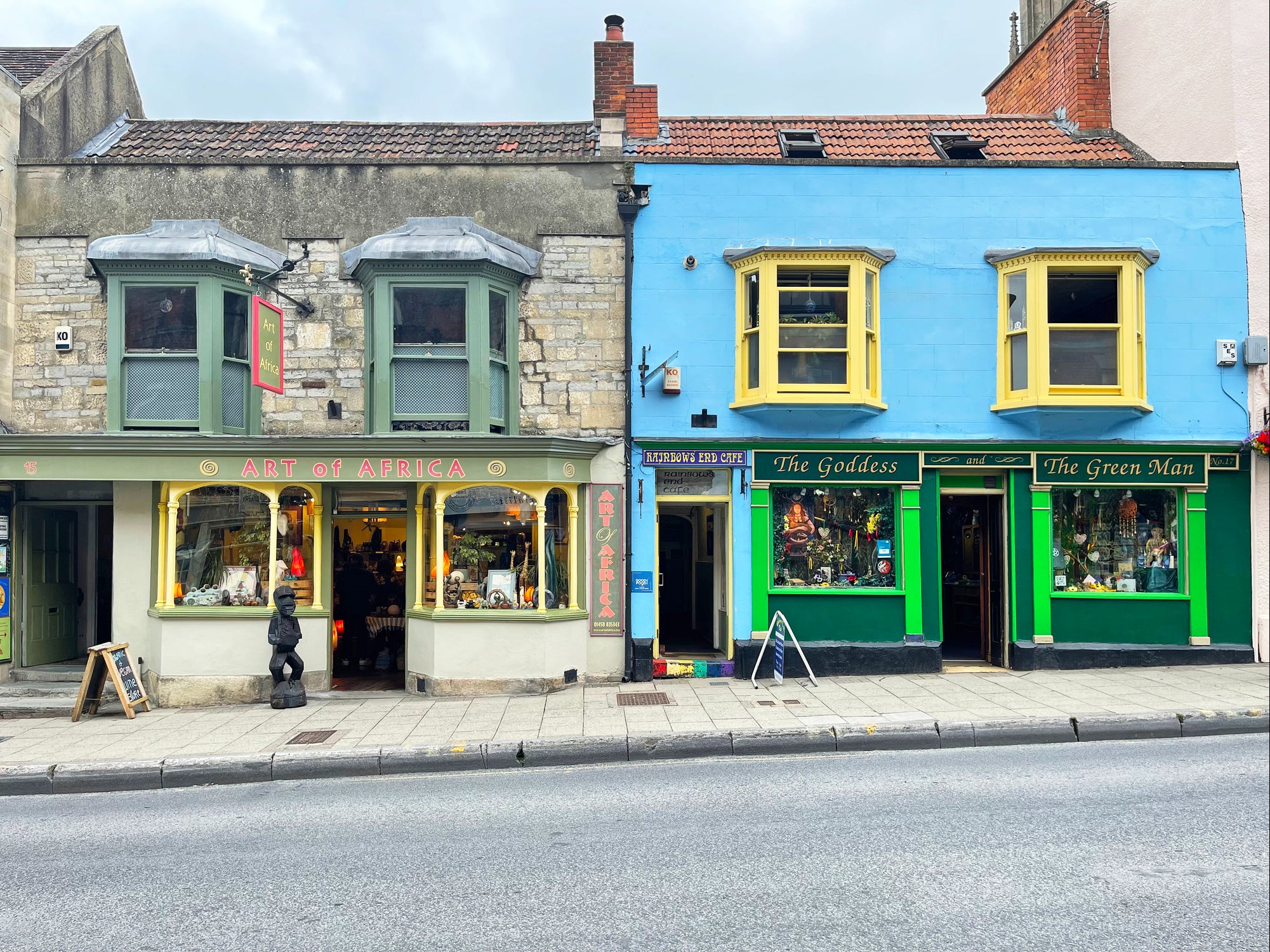Community-run businesses are leading the way in value and service
If the concept of slow manufacturing is growing, then maybe slow shops have their place on our high streets and in our villages too, writes Caroline Bullock


Barbour-clad friends in their sixties are chewing the cud in a community-run store and cafe in the village of Fittleworth, West Sussex. Detached amusement over Partygate, the logistics of the gardener’s rota and something about a misbehaving dog – it’s hard to catch all the details above the noise in a full venue buzzing on a Saturday afternoon.
If the scene is a snapshot of the rural, middle England community it serves, it’s also an ode to thriving hyperlocal commerce consolidated by the “buy local” legacy of the pandemic. The shelves showcase a local ecosystem, including flour milled nearby and milk from one of the county’s last dairies. The cafe, soon to double in size to meet demand, is full of people of all ages lapping up the community spirit and being served by cheerful mostly volunteer staff. It seems like a throwback to simpler times.
I’m at my usual table, as I’m very much a regular – drawn to what at times has felt like a necessary antidote to persistent Covid gloom and an often detached, digital world. I’m not missing the autopilot trawl of the high streets, parking charges and the spending-for-spending’s-sake consumerism that once defined weekends, nor am I surprised that the community store’s simple appeal has sustained even as restrictions eased and our options broadened.
Indeed, with a long-term survival rate of 92 per cent, it seems resilience and growth are defining factors of the community-run business sector, highlighted in a report by the Plunkett Foundation, a charity that supports these enterprises in the UK. Its chief executive James Alcock praises the model as “innovative, flexible and truly seeking to reflect the needs of the people they serve”. It’s an accurate summation that I agree with. I think these businesses work so well ultimately because they are rooted in authenticity.
Increasingly though, the authenticity feels elusive, especially in hyperlocal food businesses which purport to embody it. Businesses that laud what may well be stellar credentials and the value placed on their local supply chain don’t always extend the same attention to detail to the customer. It’s evident just a few miles down the road where a business specialising in local, artisan foods with a portfolio spanning a butcher, fishmonger, cafe and shop has all bases covered. The quality offering comes at price aimed squarely at second homers and the local gentry. A certain complacency has crept in.
The community run store has set the bar, deftly exposed bandwagon-jumping pretenders and their shortcuts while shifting my own attitudes and expectations as a consumer for the better
The shop is an aesthetic triumph of hamper displays, specialist cheese rooms and serve-yourself granola. It tells a good story about the herd behind the handmade sausage, and yet the customer experience can feel hollow. Staff are prone to chatting amongst themselves, so queries feel like interruptions. Coffees are often handed over without a thank you. On one occasion, a just-departed customer was gossiped about on the shop floor. The reality is all a bit off the message and at odds with the community-focused schtick peddled in its marketing. Shouldn’t you expect more from a place that can charge almost £6 for a small packet of blueberries? Actually, perhaps not. At times there are definitely echoes of Harry Enfield’s “I see you coming” sketch, in which his shop owner character has contempt only for customers drawn to the pretentious charm of his artisan store and paying well over the odds for the goods.
Pre-pandemic and buoyed by the healthy footfall of its prime location, staff at the brand’s cafe would man the entrance like West End bouncers. Ordering a meal rather than just drinks and arriving in a group of four or more was the preferred criteria to merit a table and they were often happy to turn those away who didn’t meet it even when there was space. There are many more outfits in this vein, taking the customer for granted because of a lack of competition.
For me, having found quality and provenance at prices that serve the whole community along with customer-first service, it’s no longer good enough. The community-run store has set the bar, deftly exposed bandwagon-jumping pretenders and their shortcuts while shifting my own attitudes and expectations as a consumer for the better.
I recall my early visits to the store as a newcomer to the village; my impatience at its post office counter over a small delay, my eye rolls as a newly trained volunteer struggled to find the right price on the till. And then it occurred to me: what exactly was I rushing for anyway? So, rather than polite tolerance, I started to have actual conversations with those behind the counter which, far from forced, anodyne exchanges, were interesting with any exasperation long gone.
If the concept of slow manufacturing is gaining traction, then maybe slow service has its place too in the right context – not slow as in ambivalence or indifference, but as in transactions and customer experiences that are more meaningful, forging connections while regenerating the local economy.
Many community-run enterprises spring up out of necessity to replace closing village stores which often were the last facility in the community. Far from makeshift substitutes, their approach is leading the way in value and service.




Join our commenting forum
Join thought-provoking conversations, follow other Independent readers and see their replies
Comments